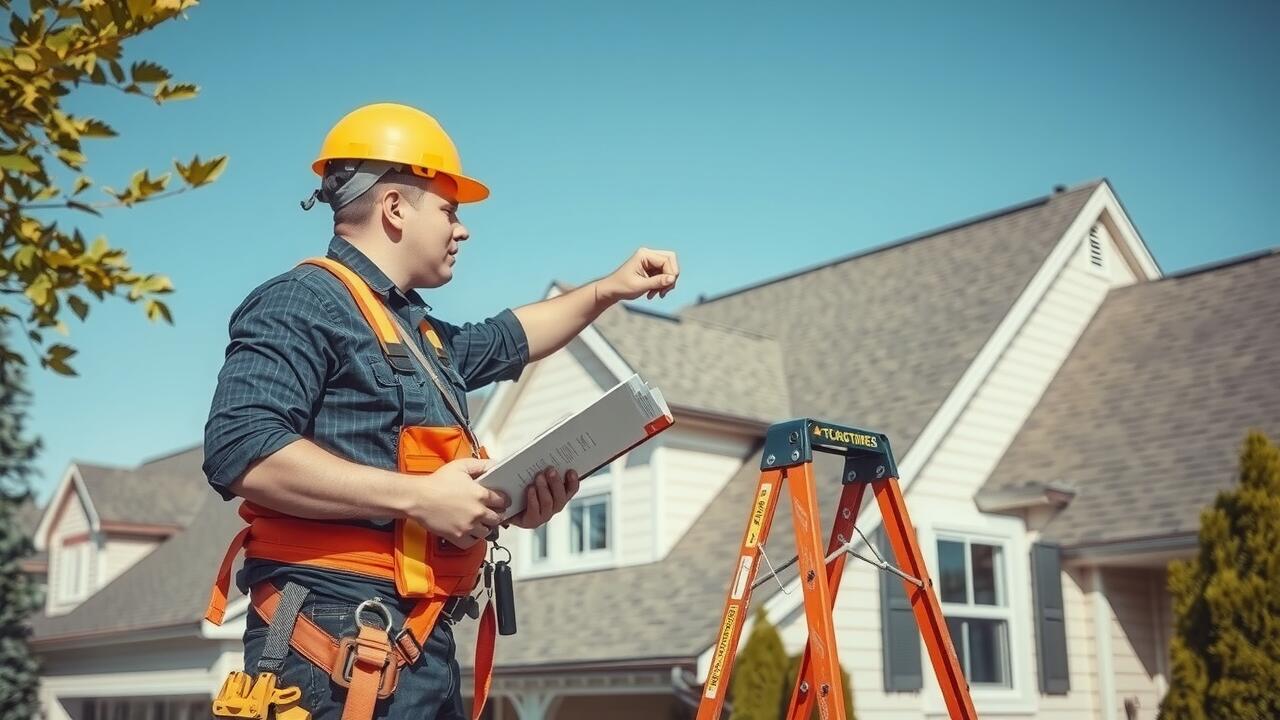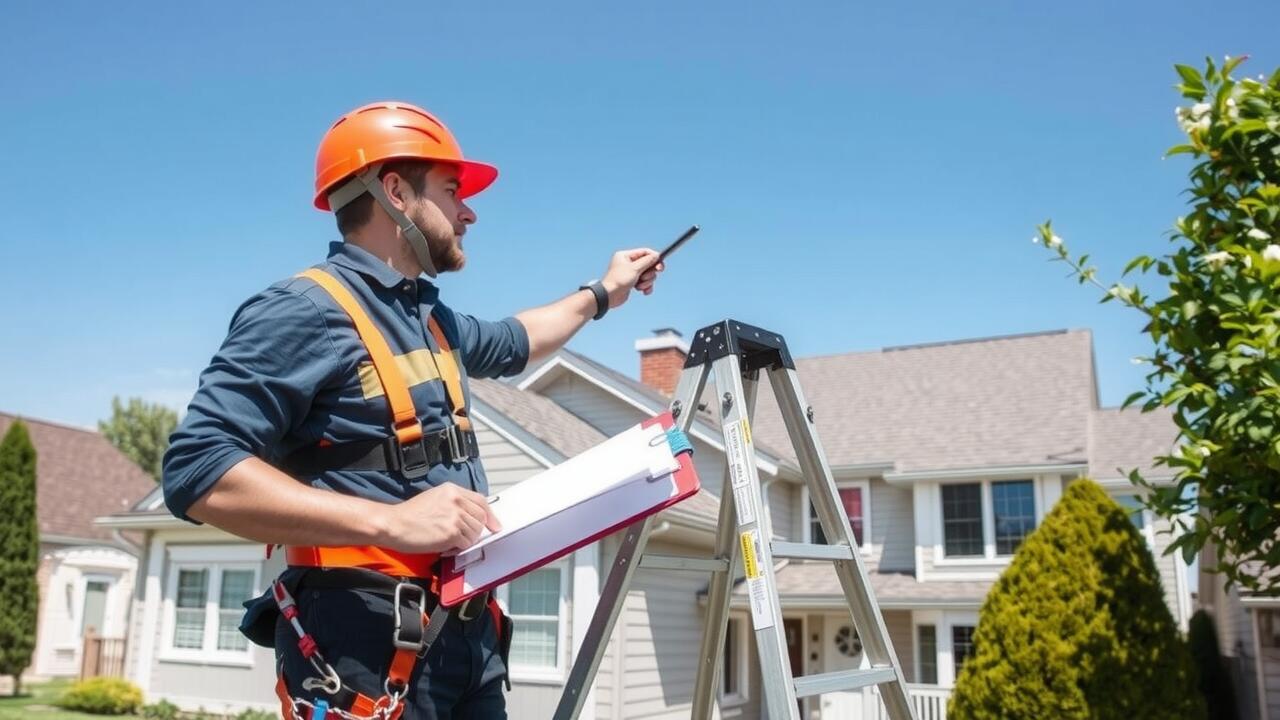
Table Of Contents
What Happens During a Roof Inspection
During a roof inspection, a qualified inspector evaluates the condition of your roofing system. The process typically begins with an overview of the roof to identify any visible signs of wear or damage. Inspectors may check for loose shingles, cracked flashing, or signs of previous repairs. Additionally, they often examine the gutters and downspouts to ensure proper drainage. Roof inspection in Twilight Hills Addition, Rapid City, follows similar guidelines, ensuring that local weather conditions and environmental factors are taken into account.
After the visual assessment, inspectors may use tools and technology to gain a deeper understanding of the roof's integrity. This could include infrared scans to detect moisture trapped beneath the surface. They may also assess the attic for signs of leaks or poor ventilation, which can impact the roof and home as a whole. Throughout the inspection, thorough documentation is crucial for providing a comprehensive report, which will serve as a valuable reference for homeowners.
Typical Procedures and Evaluations
During a roof inspection in Twilight Hills Addition, Rapid City, the inspector will methodically assess various components of the roof structure. This process typically begins with a visual examination from the ground using binoculars to identify any evident signs of damage or wear. Closer inspection occurs once the inspector accesses the roof, where they will look for missing shingles, cracked flashing, and the condition of gutters and downspouts. Advanced tools, such as moisture meters, may also be employed to detect leaks or water damage that isn't immediately visible.
The evaluation often extends to the attic space. Inspectors will check for adequate ventilation, insulation levels, and any signs of water intrusion or pest infestations. They will also examine the structural integrity of rafters and beams. Each of these procedures plays a crucial role in establishing the overall health of the roof, ensuring that any potential issues are identified early on. With a thorough approach, inspectors aim to provide homeowners with a comprehensive understanding of their roofing situation.
Red Flags to Watch Out For
When seeking a roof inspection in Twilight Hills Addition, Rapid City, it's essential to be aware of certain red flags that may indicate bias during the evaluation. Inspectors who readily recommend an extensive list of repairs without thorough evidence or justification could have a vested interest. Outside influences can cloud their judgment, leading to exaggerated assessments that might not truly reflect the roof's condition.
Another warning sign is a lack of comprehensive documentation or a poorly detailed report. An effective inspection should provide clear insights, complete with photographs and detailed descriptions of any issues identified. If the inspector fails to document their findings or presents vague conclusions, this may indicate a lack of professionalism or transparency. Homeowners should feel empowered to question unclear aspects of the inspection process to ensure they receive an honest evaluation of their roof's health.
Warning Signs of a Biased Inspection
A biased roof inspection can lead to misunderstandings and costly repairs. One telling sign of bias is when the inspector consistently overlooks or downplays visible damage. If a reviewer fails to mention missing shingles, water stains, or warped decking, their credibility may be questionable. Transparency regarding the inspection methods and findings is essential for an accurate assessment.
Another critical indicator is the inspector’s tendency to promote specific repair services unnecessarily. If the inspector suggests solutions from affiliated contractors without justifying the need, it raises doubts about their objectivity. For instance, during a roof inspection in Twilight Hills Addition, Rapid City, an evaluator should maintain a neutral stance, providing recommendations only based on factual observations rather than external influences.
How to Interpret Inspection Findings
When you receive the report from your roof inspection, it's important to read it carefully. Look for specific details about the condition of various components such as shingles, flashing, gutters, and structural integrity. A well-structured report typically includes photographs along with descriptions, making it easier to understand the findings. Each issue identified should be prioritized, indicating which problems require immediate attention and which can be monitored over time.
In areas like Twilight Hills Addition, Rapid City, local climate and building codes may also influence the inspection's context. Consider how environmental factors can affect the roof's performance and longevity. Understanding the specific recommendations made in your report and any suggested remedies will empower you to make informed decisions regarding repairs, maintenance, or potential replacements. This clarity will help prevent future complications and safeguard your investment in the property.
Understanding the Report
When reviewing the findings of a roof inspection, it is crucial to focus on both the details presented and the overall context. An inspection report should outline specific issues with the roof, including material conditions, potential leak areas, and structural integrity. Look for clear language and visual aids, like photographs, that support the claims made in the report. This clarity can help you assess whether the inspection aligns with what you observe or suspect about your roof.
In Twilight Hills Addition, Rapid City, it is particularly important to keep local weather patterns in mind while interpreting the report. The unique climate can influence roofing wear and tear, potentially skewing evaluation results. A thorough understanding of the local environment allows homeowners to better gauge the severity of any listed concerns. Engaging with the inspector for additional insights can clarify findings and ensure that you feel confident about upcoming repairs or maintenance decisions.
FAQS
What should I look for when hiring a roof inspector?
When hiring a roof inspector, look for credentials, experience, and reviews from previous clients. Ensure they are licensed and insured, and consider asking for references to gauge their professionalism and reliability.
How can I ensure that my roof inspection is unbiased?
To ensure an unbiased roof inspection, choose an independent inspector who does not have ties to contractors or roofing companies. You can also get multiple inspections from different inspectors to compare findings.
What are some common red flags that may indicate a biased inspection?
Common red flags include recommendations for unnecessary repairs, lack of detailed reporting, and pressure to hire specific contractors. If the inspector seems overly friendly with a particular contractor, that may also be a warning sign.
How do I interpret the findings from a roof inspection report?
When interpreting the findings, look for clear descriptions of issues, accompanying photographs, and suggested solutions. Pay attention to the severity of any problems noted and consider discussing the report with the inspector for clarification.
Is it necessary to be present during the roof inspection?
While it is not strictly necessary to be present during the inspection, being there allows you to ask questions, get immediate feedback, and gain a better understanding of any issues that may arise.
